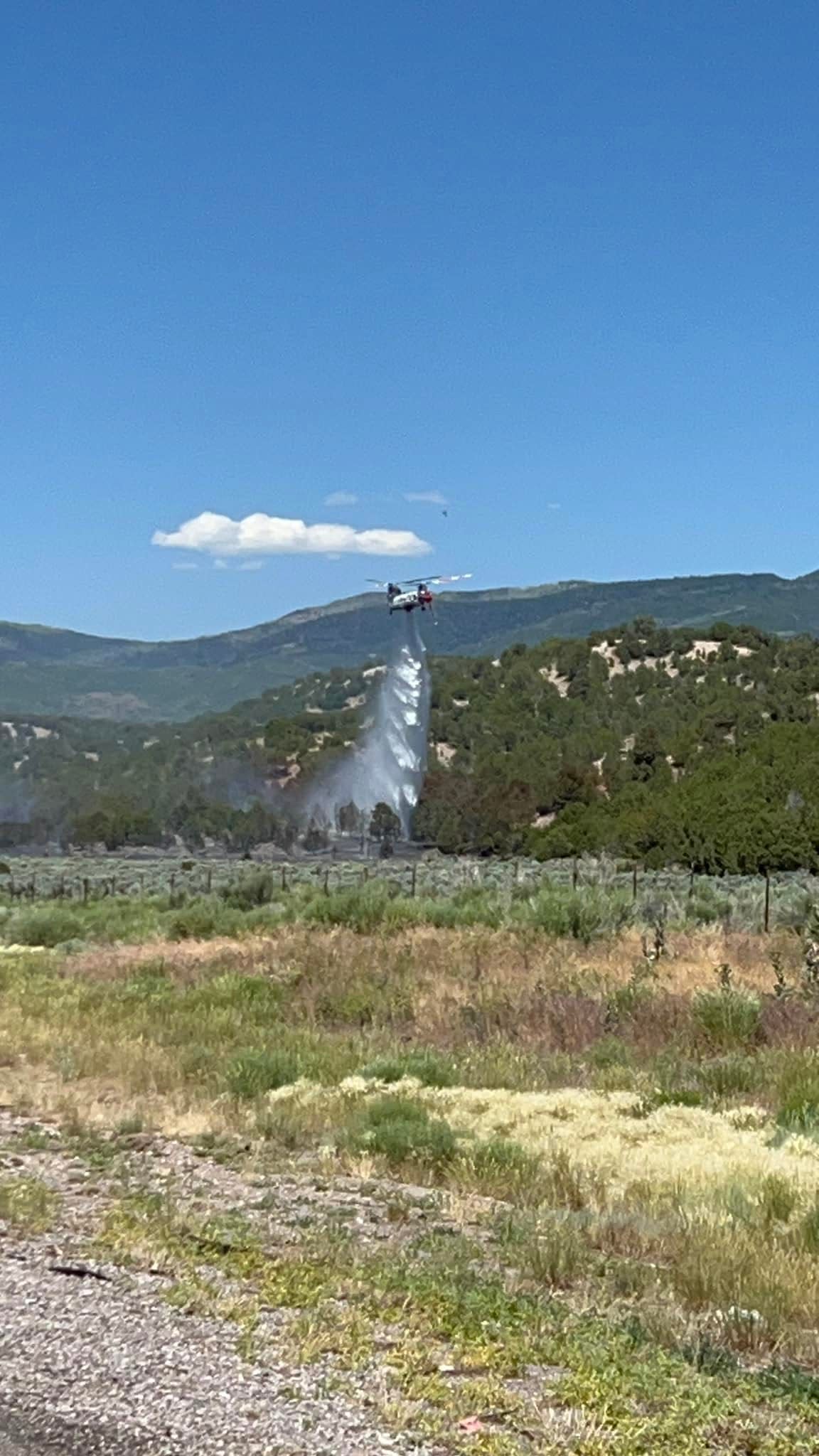Human-caused wildfire prompts temporary I-15 closure in southern Utah

A wildfire sparked along Interstate 15 in Beaver County forced the freeway to close temporarily late Friday.
The blaze was reported just north of Beaver off the northbound lanes just after 2 p.m. and quickly grew to about 20 acres as firefighters from multiple jurisdictions responded to fight it, according to the Utah Division of Forestry, Fire and State Lands.
Officials said the blaze was human-caused but they were still investigating to find how exactly it started.
The fire was reported on federal land managed by the U.S. Bureau of Land Management.
Human-caused fires are a major concern statewide this month as high temperatures and dry summer weather have started to dry out the heavier-than-usual levels of grasses that grew after an unusually wet winter and spring.
The same rain and snow that set records across much of the region during the winter and spring might actually help fuel more wildfires this summer, or at least raise the potential for serious fires, officials warned.
Officials with the Color Country Interagency fire group announced earlier this week that they were worried enough to move to "Stage 1" fire restrictions in most places, banning fireworks and other pyrotechnic devices outside of incorporated cities and placing limits on shooting, campfires, cutting and welding, heavy equipment use and smoking, among other activities.
"July through September are typically the driest and hottest months of the year," said Dave Harmon, the fire management officer for the Southwest Utah Division of Forestry Fire and State Lands. "Because of the higher-than-average spring precipitation, there is more grass on Utah's landscapes. On windy days, wildfires have the potential to become larger because there's more available fuel."
Weather forecasts for the next two weeks are even more worrisome, with the National Weather Service anticipating temperatures to rise above 100 degrees in the St. George area every day until at least mid-July. The forecasts also anticipate persistent wind, with most days pegged for southwest winds of about 15 miles per hour on average.
This article originally appeared on St. George Spectrum & Daily News: Human-caused wildfire prompts I-15 closure in southern Utah

